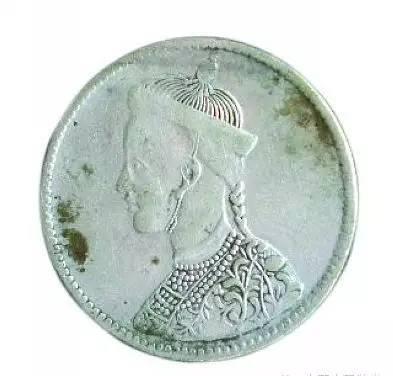
Figure 1
Figure 2
"Sichuan Rupee" is also known as Tibetan yuan, Tibetan coin, Sichuan mint rupee, Sichuan card, etc., the silver coin is mainly circulated in the Kangzang area. On the obverse is a bust of the Guangxu Emperor (Fig. 1), the only official circulating silver coin in China with a portrait of the emperor, and the inscription "Made in Sichuan Province" (Figure 2) on the reverse. This silver coin comes in three denominations: one dollar, half a dollar, and two corners and five cents. The minting and issuance of this silver coin played a positive role in defending China's sovereignty and safeguarding national interests at that time.
In the second half of the nineteenth century, after the British annexed India, they invaded Tibet twice in the fourteenth year of Guangxu (1888) and the thirty years of Guangxu, forcing the Qing government to sign the "Tibet-India Treaty", "Tibet-India Renewal" and "Lhasa Treaty" with the British side. Since then, the gateway to Tibet has been opened, and British and Indian merchants have been unimpeded in Tibet. They plundered Tibet's economic resources cheaply, and continuously imported the "Indian rupee" silver coins of the East Printing Company into the Kangzang area in order to buy Chinese silver and obtain rich profits. According to the records: "For every rupee flowing into Tibet, the weight is only three dollars and two cents, and the market transactions are three dollars, seven or eight, and the people suffer great losses." "The British arbitrarily raised the value of the currency and exploited the Tibetan people, which attracted the attention of local officials. In 1902, Cen Chunxuan, then governor of Sichuan, pointed out: "Foreign currencies are rejected, and national sovereignty is lost." "Advocating" minting new coins in imitation of the Indian rupee, size and weight, and specializing in Tibet. In 1905, The Governor of Sichuan, Xi Liang, tried to mint a batch of silver coins (Sichuan rupees) modeled on the Indian rupee and weighed three dollars and two cents at the Chengdu Machinery Bureau Mint, which was issued in the Kangzang area and was welcomed by the Tibetans. In February of the thirty-second year of Guangxu (1906), the drum casting was officially approved.
The Sichuan rupee is heavy, the color is good, the casting is fine, the Tibetans are scrambling to adopt it, and the Indian rupee is seeing less of it every day. The British invaders were not willing to lose, and with their strong economic strength, they began to manipulate the Kangzang market and lower the value of the Sichuan rupee, so that the Sichuan rupee could only be used as silver and three coins in most of Kangzang. Therefore, the Chinese government issued an order for members of the local committee to post a notice that "the Tibetan yuan (Sichuan rupee) shall be exercised according to three dollars and two points." He instructed military and civilian merchants that "they are not allowed to increase or decrease value in vain", otherwise they would "be heavily punished", and set up exchange offices in some places "in order to analyze the use of substitution", ensuring the free convertibility of the full value of the Sichuan rupee.
In this Sino-British currency struggle, although the Indian rupee could not be completely expelled, the Tibetan dollar (Sichuan rupee) has achieved the dominant position in the Kangzang region and become the main currency here. In this currency struggle concerning national sovereignty and national interests, the positive role played by the Sichuan rupee is indispensable. Judging from China's strength at that time, this was also a feat of defeating economically strong countries with weak economies.